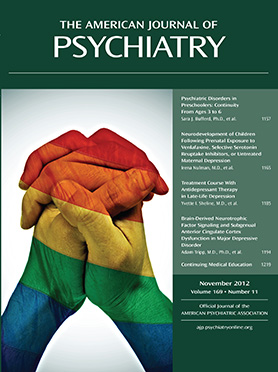The LGBT Casebook
Casebooks need not be dull. This timely and sensible book seems to me to be a model of what a casebook should be. It is clear without being simple. It is relatively brief. It embodies good listening to patients. It is scientifically up-to-date and well written and edited. It provides reasonably detailed and thoughtful examples across a solid group of major psychiatric diagnoses—as well as across a few psychiatric and social categories other than diagnoses—and examples of integrated, educated, and helpful biopsychosocial consideration and treatment of people.
I recommend this book to all psychiatrists, young and old, and to our mental health colleagues and students, particularly, but not limited to, those who are actively or might potentially work with LGBT (lesbian, gay, bisexual, and transgender) patients or clients. The scope and teaching power of this book are wider than its focus on LGBT issues, and it helps us all to consider how psychiatry and mental health care have changed in recent decades and will continue to change in the future.
Many readers may also want to read further discussion of these issues in the American Academy of Child and Adolescent Psychiatry “Practice Parameter on Gay, Lesbian or Bisexual Sexual Orientation, Gender-Nonconformity, and Gender Discordance in Children and Adolescents,” which is available online.
Although organized predominantly around DSM-IV categories, this book will remain relevant with publication of DSM-5. Following a foreword and preface, there are preliminary chapters titled “What’s In Your Closet?, “Coming Out,” “From Outlaws to In-Laws,” “LGBT Parenting,” and “Sexual Identity in Patient-Therapist Relationships.” The book consists of specific short, chapter-long case studies on attention deficit hyperactivity disorder, substance dependence, schizophrenia, major depressive disorder, dysthymic disorder, bipolar disorder, panic disorder, obsessive-compulsive disorder, posttraumatic stress disorder, generalized anxiety disorder, adjustment disorder, and borderline personality disorder. Also addressed are parent-child relational problems, partner relational problems, bereavement, occupational problems, identity problems, religious/spiritual problems, acculturation problems, and phase-of-life problems. A brief glossary is included as well.
Many of the book’s authors consider both medication and psychotherapy, and many of the psychotherapies demonstrated have realistic and eclectic components, including dynamic psychotherapy. Some attention is also given to the “neater” psychotherapies preferred by researchers, such as cognitive-behavioral therapy, interpersonal psychotherapy, dialectical behavioral therapy, exposure and response therapy, and supervised community treatment. If there is a second edition, the editors could usefully add a chapter on alcohol misuse (since the chapter on substance abuse is specific to methamphetamines), a chapter on minor depressive disorder, and a chapter on the vicissitudes of Internet use.
The contributing authors are knowledgeable of—and most are also attentive to—the contexts and meanings of various discomforts and disorders. Most of the authors are sensitive to diversity and try not to view issues in terms of extremes, which is tempting when defining boundaries (e.g., what is meant by “gay or straight”). However, assumptions of clear boundaries and categories do creep in from time to time, for example, when “coming out” is referred to as something that happens more or less once and for all, and solidly. Self-acceptance and synthesis are, in my view, healthy, but the accepted and synthesized self is complex. In one discussion, it is suggested that sexuality can be defined within four neat patient-therapist boxes (i.e., gay-gay, gay-straight, straight-gay, and straight-straight), rather than allowing for inevitable complex shades of gray or bisexual categories.
There is also a startling first sentence. It is the first sentence in the whole book, in the Foreword (and thus perhaps not edited by the book’s editors): “People in the LGBT community are just like everyone else.” Like, yes; just like, no. If that were true, this book would not have been written. The challenge that this good book meets is to deal thoughtfully and respectfully with LGBT people, who are very much like non-LGBT people but also have important differences.



